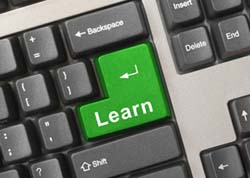Resources and Tools utilized in Dr. Ralston's courses
Students have the right to know what will be covered in a course and what is expected of them from the very first day of the class. Therefore, I have developed an extended syllabus for all my classes available on the Canvas Learning Management System (LMS). An extended syllabus includes a course description, learning objectives, course content, an outline of lecture topics, class times, my schedule of office hours, a detailed outline of all assignments, rubrics (assignment evaluation criteria and grading procedures), assigned readings, a list of additional resources and a copy of the department's classroom policies.
- Canvas Resources: Each of my courses utilize the Canvas Learning Management System (LMS) to deliver the course material. Announcements, assignments, calendar, collaborations, discussions, grades, lessons modules, quizzes, and weekly course study guides are provided via Canvas on a Home Page. The online courses that I teach have all content available on the first day of the semester. I begin each semester with an orientation to the course organization and the Canvas tools utilized in my courses. If you need any further assistance with any facet of Canvas, I recommend you start by checking out the Canvas Student Guides. Yes, you can access the Canvas course material with your mobile devices.
- Learning Outcomes: I include the learning outcomes on the course syllabus and on Canvas Outcomes page. Each outcome is associated with the evaluation rubric for each assignment and learning activity that has been designed to facilitate the achievement of the learning outcome. This makes it possible for students to track the fulfillment of the learning outcomes.
- Lectures: Students may also find a copy of all lecture slides and handouts on the Canvas resource for all courses. Students have stated that this is very beneficial for taking notes. The bonus to this practice is that these outlines allow the student to listen to what I say rather than take meaningless notes.
- Electronic Readings/eBooks: Thirty million trees are consumed each year to print books in the USA. Even though, I love my paper books and I have a large library of books in my office on campus and at home, I am concerned that many printed books (particularly academic textbooks) rapidly become out-of-date and require reprinting. It is my intent to promote responsible use of paper books. Therefore, in an effort to save paper and save students money, I intentionally attempt to find suitable readings available electronically. Whenever possible, I prefer to utilize electronic books or electronic readings as a framework for each learning experience. Electronic materials save trees, reduce paper consumption, save energy used in book or journal production, eliminate packaging materials (and the energy and expense associated with packaging), and save the fuel used in transporting paper books from the printer to the wholesaler/publisher, to the book store, and to the customer. By the way if you must buy a paper book, please plant a tree for each paper book or journal you purchase.
- Learning Activities: Active learning is a process whereby students engage in activities, such as reading, writing, discussion, or problem solving that promote analysis, synthesis, and evaluation of class content. Cooperative learning, problem-based learning, and the use of case methods and simulations are some approaches that promote active learning. I believe in giving the student their money's worth. It is my policy to teach from the first minute of the class period to the last. If my lesson plan concludes earlier than usual, I use the balance of the class period to review key ideas, upcoming assignments, or open the class to discussion on the subject.
Integrating Technology with Learning Activities

- Adobe Creative Suite 5: Dreamweaver, Flash and PhotoShop
- Audio recorded lectures using Captivate or Wimba
- Blogging with Weebly, eBlogger, or similar
- Delicious/Diigo
- Google Plus
- Just-in-Time Teaching (JiTT)
- Weebly, WordPress, or other platforms students may use to design and create electronic portfolios.